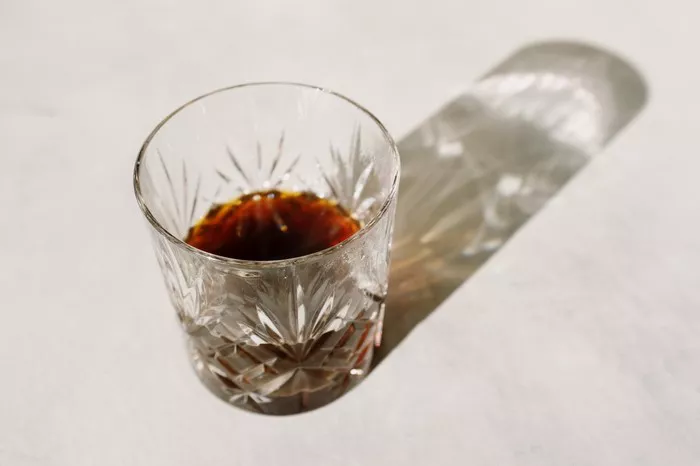In the ever-evolving world of spirits, gin stands as a timeless classic, known for its aromatic botanicals and versatility in cocktails. However, a new player has entered the scene, captivating enthusiasts and challenging traditional perceptions: white gin. With its clear appearance and innovative approach, white gin offers a modern twist on the beloved spirit. In this article, we delve into the world of white gin, exploring its characteristics, production methods, and the unique experience it brings to cocktail aficionados.
A Distinctive Clarity: Defining White Gin
White gin, often referred to as “clear gin” or “gin blanco,” is a contemporary variation of the classic spirit. Unlike traditional gin, which gains its color from the aging process or botanicals, white gin is crystal clear in appearance. This transparency allows the botanical flavors to shine through, offering a fresh and unadulterated experience for the palate.
The Essence of Botanicals: Crafting Flavorful White Gin
The heart of any gin, including white gin, lies in its botanical blend. Juniper remains a key ingredient, providing the characteristic piney and resinous notes that define the spirit. However, the botanical selection can vary widely, with distillers incorporating a range of ingredients such as citrus peels, spices, herbs, and even unconventional elements like floral petals or exotic fruits.
Production Methods: Creating Clarity
The production of white gin closely resembles that of traditional gin, with a few key distinctions. The primary focus is on maintaining the gin’s clear appearance, which requires careful attention to the distillation process and botanical selection. Distillers often use a combination of maceration and vapor infusion techniques to extract the flavors while avoiding coloration.
Vapor Infusion: A Game-Changer
One technique that plays a pivotal role in producing white gin is vapor infusion. In this process, the base alcohol is vaporized and passed through a basket or column containing the selected botanicals. As the vapor interacts with the botanicals, it extracts their essential oils and aromatic compounds, infusing the spirit with flavor. This method allows for greater control over the intensity of flavors and contributes to the clear appearance of the final product.
Modern Interpretations: Diversity in Flavor Profiles
White gin opens the door to a wide spectrum of flavor possibilities. Distillers have the creative freedom to experiment with various botanical combinations, resulting in gins that range from crisp and citrus-forward to complex and herbaceous. This diversity in flavor profiles gives cocktail enthusiasts an exciting array of options when crafting drinks.
The Art of Mixology: Cocktails with White Gin
One of the most appealing aspects of white gin is its versatility in cocktails. Its clear and vibrant nature makes it an excellent canvas for showcasing the colors and flavors of various mixers and ingredients. Classic cocktails like the Martini and Negroni take on a new dimension when crafted with white gin, allowing the nuances of the botanicals to shine through.
Refreshing Elegance: A White Gin and Tonic
The quintessential Gin and Tonic also receives a refreshing twist with white gin. The clear spirit blends seamlessly with tonic water, creating a visually appealing and flavorful concoction. Garnishes like citrus slices, cucumber ribbons, or fresh herbs further elevate the experience, offering a delightful balance of bitterness and botanical brightness.
Exploring Creativity: Crafting Signature Cocktails
Bartenders and mixologists have embraced white gin as an opportunity to innovate and craft signature cocktails. From floral-infused sips to herbaceous fusions, the canvas of possibilities is limitless. White gin’s clean profile allows for the exploration of unexpected flavor pairings, resulting in drinks that excite the senses and challenge conventions.
Visual Appeal: The Aesthetic Element
The aesthetics of cocktails play a significant role in the overall experience. White gin’s crystal clear appearance lends itself well to visually stunning drinks. Layered cocktails, color-changing elixirs, and creative garnishes all find a perfect partner in white gin, making it a favorite among those who appreciate the visual aspect of mixology.
Pairing Possibilities: Culinary Collaborations
The art of pairing cocktails with cuisine has gained popularity, and white gin brings its own unique element to the table. The spirit’s botanical complexity and clear nature make it an adaptable partner for a variety of dishes. From seafood and salads to light and flavorful appetizers, white gin cocktails can elevate the dining experience with their nuanced flavors.
In Conclusion
White gin’s emergence onto the spirits scene has invigorated the world of mixology with its modern approach and transparent elegance. It showcases the ongoing innovation within the industry while paying homage to the timeless allure of gin. As cocktail enthusiasts continue to explore the possibilities that white gin offers, it’s clear that this innovative spirit has carved its place among the classics, adding a new chapter to the rich narrative of cocktail culture.


